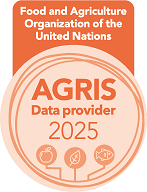Larval poisoning of Perreyia flavipes in cattle and sheep, characterization of the disease and biology of the insect
Keywords:
Sawfly larval poisoning, Perreyia flavipes, Pergidae, Acute liver disease, Cattle poisoningAbstract
Intoxication by a sawfly larvae identified as Perreyia flavipes (Hymenoptera; Pergidae; Perreyiinae), is reported in Uruguay. From June to October of 1993, 1994 and 1995, 46 outbreaks of a highly letal disease occurred in cattle and sheep in the central region of the country. During 1995 total losses of cattle exceeded 1000. The reported mortalities were 1.6%, 7.0% and 1.3$ for calves, yearlings and adults, respectively, but mortalities up to 28% occurred in some farms. Sheep were less frequently affected than cattle. Most animals were found dead. Cattle with clinical signs showed weakness, muscular tremors, depression, stupor and death. Others became highly excited and aggressive. Most affected cattle died in two days. Jaundice and mild photosensibilization were also observed in some cattle that survived up to 7 days. Gross and miscroscopic lesions were characterized by severe periacinar or massive necrosis of hepatocytes with prominent edema of the gallblader wall. Edema, ecchymosis and petechiae on serous membranes, ascites and dry content of the omasum and rectum were also observed. Invariably larval body fragments and heads of P. flavipes were found in the forestomach of 10 cattle necropsied. Diagnosis of sawfly poisoning was confirmed by experimental poisoning of three sheep and two calves with 9 to 40 g of sawfly larvae per kg body weight. Epidemiological studies showed a significant (P<0.05) negative correlation between stocking rate and morbidity. During 3 years of occurrence of the disease the rainfalls were excessive in spring and summer and scarce in autumn and winter. Spot maps showed that affected farms were located on superficial Crystalline soils, between 100 and 300 meters of altitude, where the growth of native grasses is very sensitive to summer rainfall. The life history of Perreyia flavipes is also described. Adults were seen in February and March, soon after the summer rains...











